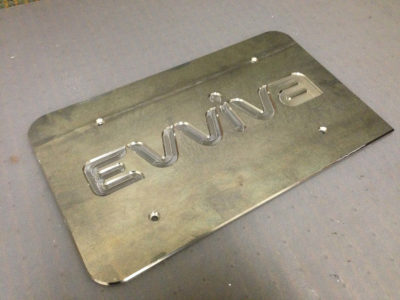Material Highlight: Magnesium Machining
What does early 20th-century photography have in common with modern precision aerospace parts?
The answer is element number 12 on the periodic table—Magnesium (Mg). Named after the Greek region Magnesia, magnesium is an abundant element found in seawater and the earth’s crust.
This cost-effective metal boasts exceptional machinability and a high strength-to-weight ratio—in fact, it’s the lightest structural metal around. It’s also extremely flammable. That may have been ideal for making flash powder 100 years ago, but it introduces risk on a precision machine shop floor.
Although magnesium is experiencing a resurgence in manufacturing, few machine shops work with it because doing so requires special precautions.
At KAD, we have the expertise to take on magnesium machining safely. Here’s an overview of magnesium machining—and what makes our team capable of taking on this challenging material.
Common Applications for Machined Magnesium
Magnesium alloys are used across multiple industries in applications such as:
- Aerospace parts: gearbox housings, landing wheels, and helicopter rotor fittings
- Racing applications for automobiles: transmission housings and support brackets for brakes and clutches
- Medical devices: wheelchairs, orthopedic devices, and cardiovascular stents
- Consumer goods: bicycle frames, drones, computer housings, and luggage
Common Types of Magnesium Alloys
There are two groups of magnesium alloys: cast alloys and wrought alloys.
1. Cast alloys
Cast alloys are formed by pouring molten metal into a cast to produce the desired shape. Typically, cast alloys of magnesium include varying amounts (but always less than 10%) of metals such as aluminum, manganese, and zinc. More recently, rare earth metals and zirconium have been used to create magnesium cast alloys.
- AZ91D offers relatively high strength, corrosion resistance, and good castability, making it the most used die-cast magnesium alloy.
- AM60B is more ductile than AZ91D, with greater toughness and elongation.
- AJ52A and AJ62A contain strontium and are well suited for high-heat and corrosive environments in the automotive industry.
2. Wrought alloys
Aluminum, manganese, and zinc are the most commonly used metals in magnesium wrought alloys. Made by either extrusion, forging, or rolling processes, magnesium wrought alloys are divided into heat-treatable and non-heat-treatable groups.
- ZK60A is a heat-treatable alloy primarily employed for its high strength and toughness. It’s commonly used in the automotive industry.
- AZ31B is lightweight and has good machinability. It’s often used as an alternative to aluminum alloys because of its high strength-to-weight ratio.
- AZ31C, made with aluminum, is one of the most popular magnesium alloys due to its low mass density and excellent mechanical properties. It’s ideal for lightweight applications that don’t require corrosion resistance and has potential for aerospace projects.
Why KAD Excels at Magnesium Machining
The primary challenge of machining magnesium is managing its flammable properties. Sparks can fly when magnesium comes into contact with even a minuscule amount of steel.
The flames can melt a machine in under a minute, and only sand can put out the fire.
In our shop, we eliminate the risks of sparks and fires by taking several safety measures:
- Dedicated tooling. One stray steel chip could start a spark, so we use magnesium-specific tooling for all magnesium machining projects.
- Isolated work surfaces. Instead of machining with a vice with hard steel jaws, we use a dedicated workspace with soft aluminum jaws that are less likely to spark. We also have stringent processes for containing scrap securely.
- Fire safety equipment. We have specialized fire extinguishers and keep sand present in the shop at all times.
- No “lights out” machining. While we regularly leverage lights out machining for many of our other projects, we forgo that approach with magnesium machining. Instead, we constantly supervise all magnesium projects and never automate operations when the shop is empty.
Another challenge of magnesium machining is that, like aluminum, magnesium can corrode when exposed to the elements: chlorides, bromides, iodides, and sulfates can be especially damaging. We mitigate corrosion with finishing solutions such as anodizing and hard coat anodizing.
Magnesium may seem tricky to work with, but this stable metal can meet many project requirements. At KAD, we’re proud to offer magnesium machining to our customers seeking a strong, cost-effective, and lightweight material for their parts.
If you’re interested in working with magnesium for your next prototype model, request a quote from our team today.



